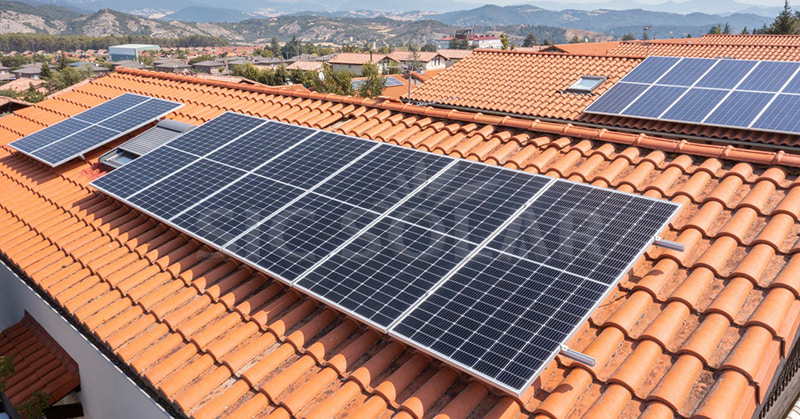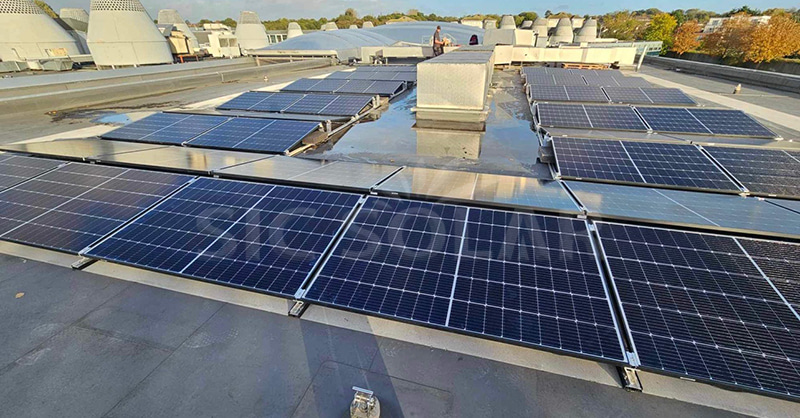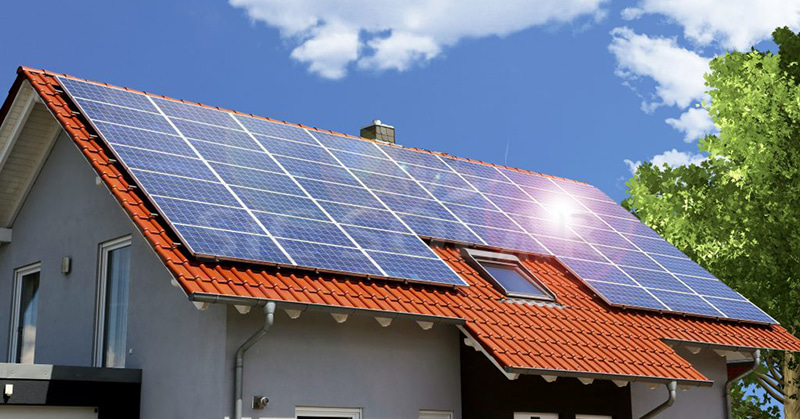-
|1.Roof Design and ComplexityPitched Roofs: Pitched roofs are angled, which means solar panels can be mounted at a natural tilt that allows them to capture sunlight more efficiently. The sloped design simplifies panel positioning, and the installation process typically requires fewer adjustments to the mounting system. Plus, pitched roofs are often made of materials like tiles, shingles, or metal, which provide secure anchor points for mounting brackets.1.Mounting SystemsPitched Roofs: The mounting systems for pitched roofs are generally simpler and more straightforward to install. SIC Solar offers robust and flexible mounting systems for pitched roofs, which include rail-based solutions that allow quick and efficient setup. The mounting hardware typically involves fewer components compared to flat roof systems, which can help reduce labor and material costs.2.Labor CostsPitched Roofs: Installing solar panels on a pitched roof can be easier and quicker, which can reduce labor costs. Since the angle of the roof already helps position the panels at an optimal tilt, the installation process is more straightforward. The presence of pre-existing anchor points in the roof structure, such as rafters, also makes mounting easier.3.Structural ConsiderationsPitched Roofs: Pitched roofs often require fewer structural reinforcements. The angle of the roof can distribute the weight of the solar panels more evenly, and the mounting brackets can be directly secured to the roof trusses, which generally provides sufficient structural support.4.Roof SpacePitched Roofs: Pitched roofs are typically smaller and can limit the number of panels that can be installed. However, the slope of the roof helps optimize panel orientation for maximum sunlight exposure, which can offset the smaller available space.
-
What are the advantages of pitched roof solar installation?
|With the increasing interest in solar energy among homeowners and businesses for its environmental and economic benefits, pitched roof solar systems remain a popular choice. The sloping angles of pitched roofs provide a unique set of advantages for solar panel installations.
Why Choose a Pitched Roof for Solar Panel Installation?
Pitched roofs, whether steep or gently sloped, offer distinct advantages for solar power generation. Here's a closer look at why many property owners opt for solar installations on pitched roofs.
1. Optimal Angle for Solar Panel Efficiency
One of the biggest advantages of installing solar panels on a pitched roof is the natural tilt it provides. The angle of the roof can often be perfectly aligned with the optimal angle needed for solar panel efficiency. In the Northern Hemisphere, solar panels perform best when they face south at an angle between 30 and 40 degrees. A pitched roof, depending on its slope, can already provide this ideal positioning, reducing the need for complicated adjustments.
SIC Solar mounting systems are designed to be flexible, allowing for precise angle adjustments to optimize the solar panel's performance, making it a perfect solution for pitched roofs.
2. Better Exposure to Sunlight
A pitched roof can also help panels receive more sunlight throughout the day, especially when the roof is facing the right direction. Depending on the location, the natural slope of the roof can help solar panels avoid obstructions like trees or neighboring buildings that might cast shadows. For example, south-facing pitched roofs in the Northern Hemisphere receive the most sunlight, ensuring optimal energy generation.
By utilizing high-quality mounting systems from SIC Solar, which are specifically designed to secure panels at optimal angles and avoid shading, the energy capture potential is maximized.
3. No Need for Additional Ground Space
Pitched roofs make use of existing space on the building, meaning you don't have to sacrifice precious ground space for energy production. This is especially valuable in urban areas or small properties where yard space might be limited. By leveraging the slope of the roof, property owners can install solar panels without any disruption to their daily use of the land below.
This is one of the primary reasons for the popularity of pitched roof installations—no extra space is required, making it an efficient use of the building's structure.
4. Increased Durability and Protection from Elements
Pitched roofs often provide natural drainage for rain and snow, which helps in maintaining the performance of the solar panels. Water runoff is less likely to pool around the panels, ensuring they stay clean and functional. Additionally, snow can slide off pitched roofs more easily, preventing it from accumulating on the panels and potentially blocking sunlight.
The durability of pitched roofs, combined with SIC Solar robust mounting solutions, means that the solar panel system remains secure and reliable in all weather conditions.
5. Cost-Effectiveness and Easy Installation
Installing solar panels on a pitched roof is often more cost-effective than other options, such as flat roof installations or ground-mounted systems. The natural slope of the roof requires fewer adjustments during installation, which can lower both the cost of labor and the time needed for setup.
SIC Solar mounting systems are specifically engineered for ease of installation on pitched roofs. Their innovative designs allow for quick and straightforward setup, saving time and reducing overall installation costs.
6. Aesthetically Pleasing Integration
Pitched roofs often lend themselves to a more aesthetically pleasing integration of solar panels. The panels can be installed seamlessly with the roof's slope, creating a clean and professional look that enhances the building's design. This is particularly important for residential properties or buildings in areas with strict aesthetic guidelines.
The mounting systems offered by SIC Solar are designed not only for functionality but also for aesthetic appeal, ensuring that the panels blend well with the architecture of the home or business.
7. Increased Property Value
The installation of solar panels, especially on a pitched roof, can add value to a property. As solar energy becomes more desirable, potential buyers are looking for homes or commercial spaces that already have energy-efficient systems in place. A pitched roof solar installation is often seen as an attractive, long-term investment that will reduce future energy costs.
With high-quality mounting systems from SIC Solar, property owners can ensure that their solar panels are installed to the highest standards, enhancing both energy production and property value.
How SIC Solar Contributes to Pitched Roof Installations
When it comes to pitched roof solar installations, having a reliable mounting system is crucial for ensuring long-term efficiency and durability. SIC Solar, a leading manufacturer of photovoltaic mounting systems, offers advanced solutions that cater to the specific needs of pitched roof applications. Their systems are designed to withstand the forces of wind, rain, and snow while ensuring the panels are securely attached and optimized for maximum energy output.
Whether you're installing panels on a steeply sloped roof or a more gently pitched one, SIC Solar provides versatile, easy-to-install solutions that can be customized to suit the unique requirements of your project. Their high-quality mounting systems ensure that solar panels are securely fixed in place, minimizing maintenance and maximizing energy generation for years to come.


